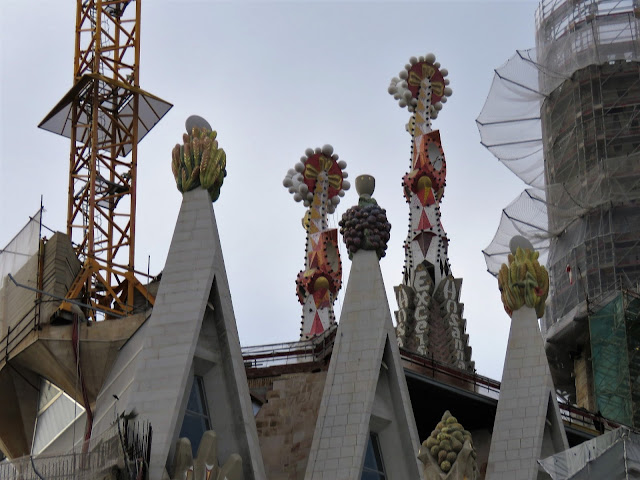UPDATED November 2025
Barcelona’s Basilica of the Sagrada Família, Antoni Gaudí’s famously unfinished masterwork, has crossed a major technical and symbolic threshold. Construction crews have installed the first element of the cross atop the basilica’s central tower, bringing the structure to 162.91 meters and making it, by measured height, the tallest church in the world.
November 2018 - Barcelona Spain
Antonio Gaudi spent most of his life in Barcelona and the city boasts the largest concentration of his works in the world. His style is unique, often imitated but never matched.
Gaudi's ideas shaped the way of thinking about architecture for a whole generation. His influence on Catalan modernism was immense, creating a unique style that many have tried to replicate.
The first stop the tour made in Barcelona was at Sagrada Familia.
Impressed? Yes, but as a church I don't know... Some people with us even described it as a monstrosity.

Gaudí died in 1926, leaving the church less than 25% completed and since then it has continued to be worked on by a number of architects and builders. It has been continued based on what information Gaudí had left behind (models, some sketches); however, given that Gaudí was constantly adapting his work as it progressed and the information left behind is not that detailed, it is probably best to think of the later work as inspired by or an interpretation of Gaudí’s work. Also a fire in 1936 during the Spanish Civil War burned down the workshop destroying many of the architect’s original plans and models.
The Nativity façade is probably the one place Gaudí had the most direct influence, and it is one of the three grand façades of the church. It is dedicated to the birth of Jesus and it is decorated with scenes reminiscent of the elements of life. Given that much of the work was completed after Gaudí’s death, only the crypt and Nativity façade are included in the UNESCO designation.
There were many active cranes working on it.
The amount of symbolism is overwhelming!
When completed it will have eighteen towers!
Packed inside.

















































...perhaps they didn't know when to stop.
ReplyDeleteThat will be an amazing cathederal when it is finished.
ReplyDeleteIt certainly is a show stopper. The cathedral and some of Gaudi's other designs are featured in Dan Brown's most recent novel Origin.
ReplyDeleteOur balcony and lounge looked out straight at its, I think south western side. It is a wonder we didn't have nightmares.
ReplyDeleteMaybe that was the same place we stayed.
DeleteWe stayed in an apartment with a view of Sagrada. It was rather amazing but I can't say I liked it. We missed seeing inside, as it was a three day waiting list, and I believe the wait times are much longer now.
ReplyDeleteWe didn't see it inside either. I did like his Park Güell, even if it was raining!
DeleteIt's a truly amazing and stunning creation. Something for everyone, that's for sure.
ReplyDelete...Jackie, this is project that will never end! I LOVE your new header!!!
ReplyDelete